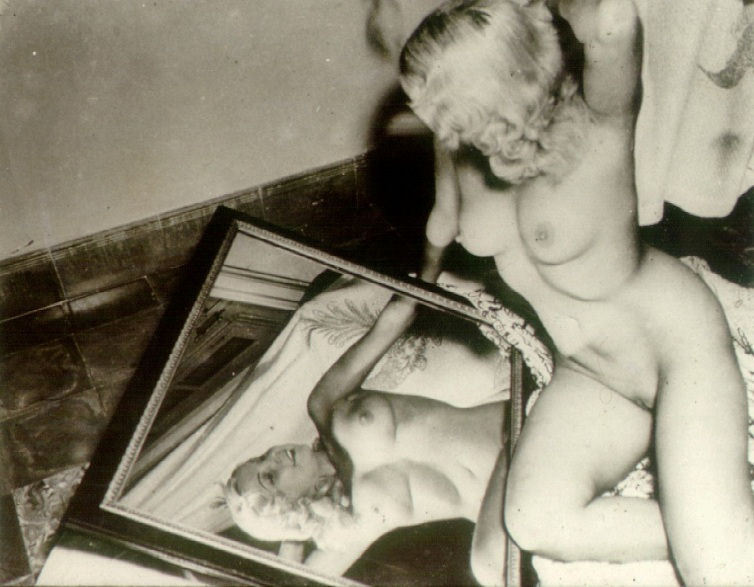
Leda in front of the mirror, 1951
Cuban Art Space 231 West 29th Street, 4 Fl NY 10001 New York États-Unis
Opening September 16 at the Center for Cuban Studies Cuban Art Space, Constantino Arias - The Years Before: Havana 1945-1958 presents the work of a little-known witness to Cuban life before the Revolution.
Arias (1920-1991) was a freelance photographer, not on staff of a photo agency or newspaper. But he recorded, without artistic pretension, a spectrum of Cuban life in the 1940s and ’50s: social events, Cuban and foreign personalities, unidentified musicians, and student revolts during the period ranging from the 1940 Constitution to 1959, when Fidel Castro and his comrades came to power after defeating Batista. Moving quickly and anonymously, Arias became a chronicler of Cuban society in the years after World War II. He documented Havana's less glamorous side, in places like the Rumba Palace Bar, a club in the Playa de Marianao. The photos he took there--of prostitutes, drunks, black musicians, and the stray American tourist--were never published; editorial censorship, bent on preserving Havana's tourist-friendly image, saw to that.
In his day job, Arias was was something of a paparazzi. From 1941 to 1956, he worked as the “official” photographer at the Cuban National Hotel. Built in 1930 during the Machado administration and run by gangsters during the succeeding governments of Grau, Prio, and Batista, the hotel and its casino attracted many American tourists and celebrities, whom Arias captured in quick snapshots. He also did a well-known series of nudes, “Leda at the mirror,” with a blond model who was the lover of a well-known mobster.
Arias began photographing using a Speed Graphic camera with 4 x 5-inch negatives, then switched to a 6 x 6 Rolleiflex. "The continued use of flash due to the lack of fast film, combined with Arias´ speed when working," said Cuban researcher Ileana Cepero, "resulted in images with high levels of immediacy and sharpness. Arthur Fellig (Weegee), was the leading representative of this style in the US press photography during the 1930s and ’40s. Arias is the Cuban Weegee.”
As a photographer, Arias’s interest in social issues drove him to document the poorest classes, and to work with left-wing newspapers such as The Street and Alma Mater, recording student rallies and strikes organized by the Popular Socialist Party.
After the Revolution, Arias joined official organizations for photojournalists, maintaining his archive of nearly 10,000 negatives at home. In 1985, the Cuban Photo Library, directed by Maria Eugenia Haya (“Marucha”), presented his first retrospective in New York after buying part of his archives. The gelatin silver images on view at the Center for Cuban Studies Cuban Art Space were printed in the 1980s from Arias’s negatives by Haya’s husband, Mario Garcia Joya (“Mayito”), since Arias himself was no longer interested in making prints. The Arias archive is maintained by his family, and no recent prints have been made from it. The archive has not been catalogued.
Along with The Years Before, the Cuban Art Space is presenting a selection of images by journalist and Center for Cuban Studies founder Lee Lockwood, who died on July 31 at age 78. Picking up where Arias’s images leave off, Lockwood’s photographs depict the early years of the Cuban Revolution. He travelled to Cuba several times, and in a 1963 visit with the Swiss photographer Rene Burri, he did a well-known photo essay on Ché Guevara in his office at the Ministry of Industries. Lockwood also took numerous shots of Fidel Castro in the course of his everyday activities.
Constantino Arias - The Years Before: Havana 1945-1958 runs through October 16 at the Center for Cuban Studies Cuban Art Space. Arias’s photographs will also be featured in the exhibition Cuba in Revolution, opening at New York’s International Center of Photography on September 24.

